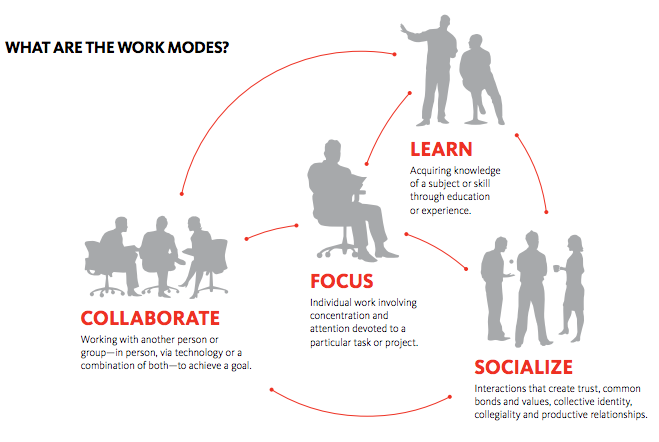The cardStyleInterpolator function specifies the interpolated types for different parts of a card. It permits us to customise the transitions when navigating between two screens. It receives a property value referred to as present.progress that represents the animated node progress worth of the current display. Applying this value to the property opacity changes the animated node to the worth of animation outlined in the shared element config object. Its cardStyle property applies the style on the view that is representing the card. To navigate from the house display to the element display and again, the app needs to have a navigation flow. This is going to be offered by createSharedElementStackNavigator methodology from react-navigation-shared-element module. It incorporates the React Navigation library for react-native-shared-element. This technique allows us to create a stack-navigator which is the preliminary process of sharing parts between two separate screens. It wraps each route with the shared component and detects route adjustments to set off the transitions. The strategy of defining the navigation circulate utilizing this methodology is just like React Navigation's stack-navigator module. To run the applying, we have to exchange the contents of the index.ios.js file with the piece of code of our reworked application from the final step. Then we simply must open the Xcode project and press the large Run button. First, a terminal will open with the React Native server, after which the simulator window will seem. The React Native server creates a bundle, which the native software will then fetch. This permits for a web development-like rapid improvement cycle, the place changes might be mirrored almost immediately in the simulator. In this instance, it's going to create one view from 'width' '0' to '100' over a length of 3 seconds. Notice that we are using 'Animated.View' as an alternative of 'View'. Also, we are using 'Animated.timing' methodology to change the value of 'width'. 'width' is a worth outlined within the 'state' of the component.
Its value is used to set the width of the 'Animated.View'. Using the same strategy, we can animate each peak,width of a view, add animation to the opacity of a view and so on. If we alter the state continuously, it's going to re-render the component again and again, which can impression the performance of the view. Animation API makes use of a special mechanism to point out the animation extra effectively. To run the appliance, we have to exchange the contents of theindex.ios.jsfile with the piece of code of our transformed application from the final step. For one, native apps usually leverage animations to assist create a great user expertise. Animations such as button results, display screen transitions, and other visible feedback may be subtle, but they support continuity and guidance within the apps you construct. They all function to dynamically tell a story about how your utility works. Without animations, an utility can feel like only a collection of static screens. For now, stay tuned; we'll be trying out animations in-depth during Lesson 5. LayoutAnimation allows you to globally configure create and updateanimations that might be used for all views within the subsequent render/layout cycle. Inside the constructor(), create an animated value for storing the present background colour. After that, initialize the state that acts as a swap for storing the current status of the button. Once the person faucets on the button, it will be up to date to trueand will only be set to falseagain as soon as the imaginary process is finished executing. We have to outline animated components using Animated API to add animations to them.
CreateAnimatedComponent() can be used to make any component animatable. Components like Animated.View, Animated.Text, Animated.Image, etc. are supplied out of the box by Animated API and can be utilized on the go. Animated.occasion is the input facet of the Animated API, permitting gestures and other occasions to map on to animated values. This is done with a structured map syntax in order that values can be extracted from advanced occasion objects. The first level is an array to permit mapping throughout multiple args, and that array contains nested objects. In the instance, you can see that scrollX maps toevent.nativeEvent.contentOffset.x , and pan.x and pan.y map to gestureState.dx and gestureState.dy, respectively . BounceValue is initialized as part of state within the constructor, and mapped to the size remodel on the image. Behind the scenes, the numeric value is extracted and used to set scale. This is completed in an optimized means that's faster than calling setState and re-rendering. Breaking down the code above, first, we reset the person animated values, then we begin the sequence animation. In this case, we're only utilizing timing animations, however you can actually mix in spring and decay.
Another difference is that we solely start the sequence animation itself, not the person animations inside it. In the code above, we don't really have to specify how the animated value will change over time. Using the interpolate technique is optional if all we have to animate is the component's width, height, margin, or padding. You can nonetheless use it if you need to have fantastic management over how the animated worth will change. But for the explanation that width is a really linear property, we don't really want to do this. Plus the animation seems better if the width adjustments in uniform trend over time. The property animation determines how the animation goes to happen when navigating between two screens. For example, within the above code snippet, the animation has a value known as move. There are different values out there similar to fade, fade-in, and fade-out. The property resize is the habits that determines the shape and measurement of the factor ought to be modified or not. For instance, within the above snippet, the worth clip provides a transition effect which has similarities to a textual content reveal effect. The DetailScreen component goes to render the major points for each image that's part of the scroll list on the house screen. On this display, a picture is proven with a again navigation button that's positioned on the top of the screen. It receives the information in type of an item object that's destructured utilizing route.params from React Navigation library. Beneath the image, it will show the title that might be shared with the home display screen and some dummy textual content.
Let's take advantage of the fact that we're using JavaScript and start considering of our styles as code. Let's construct an application that offers the user a button to change the theme from mild to darkish. But before we start coding, let's walk through what we're making an attempt to construct. React Native comes with many built-in components, and the neighborhood has constructed many more which you'll find a way to embrace along with your tasks. Those kinds could additionally be applicable to other forms of components. For example, the Text component supports the fontWeight property . Conversely, the View component helps the flex property . Create a components folder on the basis of the project, we may have all our JavaScript classes in right here. Now, let's create a Panel.js file and add the following code. We'll be constructing with React, and there are great options out there for us to leverage. Notably, the react-transition-group is the official package that handles parts getting into and leaving the DOM. Let's discover some relatively simple patterns we will apply, even to current components. The styles for the progress bar are returned by the getProgressStyles()function. Here we're utilizing the animated worth from earlier to calculate the width and background color.
This is finished instead of making a separate animated worth for every animation because we're interpolating the same value anyway. If we used two separate values, we would need to have two animations in parallel, which is less environment friendly. React Transition Group just isn't an animation library, it does not animate kinds by itself. Instead, it exposes transition phases, manages classes and group components and manipulates the DOM in useful methods, making the implementation of precise visual transitions a lot easier. The React Transition Group component was developed by the ReactJS community staff. It lets you implement primary CSS animations and transitions worry-free. On the primary line of the code above, we're creating a new style object composed of the card's default style (styles.card) and the rework types. If you're acquainted with CSS animations, this could make sense to you. But if not, the code above is using a CSS scale transform declaration to scale the scale of the cardboard based on the current worth of the animated worth. In the above code, we're initializing an animated worth to zero. This is as a outcome of each component all the time begins out as static, they solely transfer as soon as the consumer interacts with it or it turns into visible in the foreground. The updating of this animated value is what permits us to move components as you'll see later on. It has the identical idea as the state though animated values are particularly used for animations. Animations are an important part of the consumer expertise, particularly for mobile apps. Animations provide customers with a transparent suggestions when they're interacting with the UI elements within the app. Animations deliver the app to life through using movement. Now when every thing is re-rendered when the props or state changes, how come React itself is performing that well?
The magic ingredient is the "Virtual DOM." Whenever one thing is needed to be re-rendered, a digital illustration of the updated DOM is generated. When the dialog's open prop is true, the contents of the dialog will render. Focus shall be moved contained in the dialog and trapped there as the consumer cycles via the focusable parts. Sharing elements in between screens in React Native using React Navigation shared component module makes both the process of development and end-user expertise smooth. I would recommend you to check out the official documentation right here for extra information. For instance, within the previous demonstration, the back button renders before the transition happens. To management its behavior, let's animate it using the React Native Animatable library. The config object above triggers the transition results on shared elements between screens primarily based on the distinctive ID shared between those two screens. To get began, let's create a new React Native project using expo-cli. From a terminal window, execute the command under after which navigate contained in the newly created project listing. After navigating, set up the libraries which may be required in order to create Shared Element Transitions. Let's use react-navigation from one screen to another utilizing a stack navigation sample. Learning the assorted types and the means to manipulate them takes time. This is why it's essential to start with fundamentals like the method to apply and manage styles. Another essential distinction is how React Native handles flex-direction, a property that establishes the primary axis (i.e., defining the direction in which flex items are placed). But since we're engaged on cell units, React Native units the default to column, which lays out gadgets vertically. The first thing React does when setState() is recognized as is merge the thing passed to setState() into the current state of the component.
The end goal of reconciliation is to replace the UI based mostly on this new state in essentially the most environment friendly way attainable. To do this, React will construct a brand new tree of React components . Once it has this new tree, React will "diff" it in opposition to the previous element tree in order to determine how the UI ought to change in response to the brand new state. Constantly changing the key of a component — even when its kids or props haven't been modified — will pressure React to remove it from the DOM and remount it. Here, an Animated.View component is used and the animated variable is passed on to the transform property of the type attribute. And we're calling our animation handler on click of the button. It is really helpful to read a bit about transform property earlier than working on animations as most of the animated variables might be handed on to it. RN's TextInput component isn't animatable by default, so we need to make it animatable utilizing Reanimated's createAnimatedComponent technique. This permits us to pass animated props or types to this component. They additionally deal with cleanup on unmount so they are safe by default. There are certain stipulations that beginners might need to set up so as to develop for React Native. Since iOS was the primary platform supported and the one we're covering on this tutorial, we'd like macOS and Xcode, at least model 6.3. What helps is putting in Watchman via the Brew package supervisor withbrew install watchman. While this is not essentially needed, it helps when coping with lots of information inside our React Native project.
React Native is a framework for constructing native iOS and Android applications using JavaScript. It's based mostly on the same concepts as React, however uses native components instead of net components to render a user interface . Since iOS was the primary platform supported, and the one we're masking in this tutorial, we need macOS and Xcode, no much less than version 6.3. What helps is putting in Watchman through the Brew package supervisor with brew set up watchman. Some styling components are related between components however not exactly the same. For example, the View component supports the shadowColor property, whereas the Text component helps the textShadowColor property. Some types, like shadowPropTypesIOS, solely apply to a selected platform. This is kind of at all times what you need in a dialog, but in some cases you might have the want to customize this conduct additional. Let's say we're building a simple React and Redux utility that lets users create and handle a list of duties. Basic functionality allows customers to add items to their task list, remove objects, and mark gadgets as completed.
Text inputs with customized label and icon animations for iOS and android. Small simple animations will enhance the user expertise of your utility. We can create many different complicated animations, but the ideas are the identical. You can obtain the code for this tutorial from Github. If you've any questions please depart a remark or ping me on Twitter. There are only three ideas that we have to know when dealing with animations. First we'd like the Animated.Value to carry the worth for every body during the animation. Second, we need to calculate the values for every animation utilizing the Animated.spring methodology . Third, we want to use an Animated.View component as an alternative of an everyday View and assign the calculated values to the type property that we want to animate. Now that we've our Panel component prepared, let's create some situations in our app. Open the index.ios.js file and add the next code.
































































